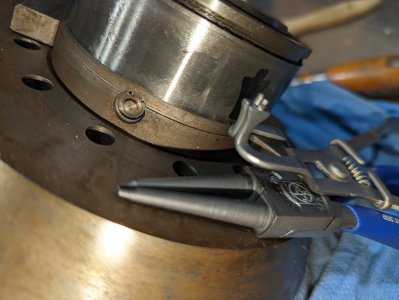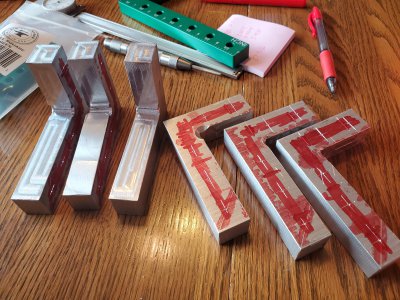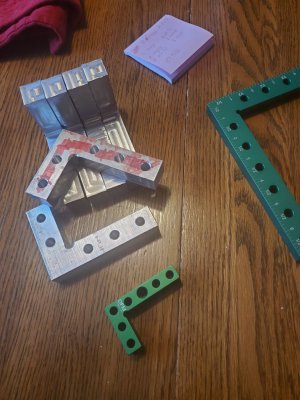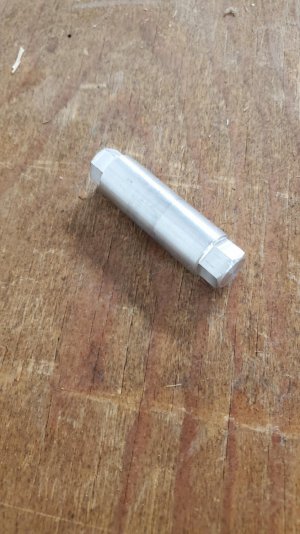Problem: Craptastic Clarke Metalworking drill press bought at Tractor Supply; came with .060” of runout. Couldn’t drill a small hole without risking the drill. New Chuck made no difference; new arbor made no difference.
Solution: Re-machine the drill press spindle. But when I got it apart, I discovered that the Morse #2 taper had a bottom before the removal-tool slot, and the MT2 tang fit through a slot in that bottom. I didn’t think I could repair 60 thou of runout without the arbor bottoming out.
So, I decided to machine an arbor just for use in this machine. The arbor is Morse 2 on one end and Jacobs 3 on the other end. I machined a new Jacobs taper.
But it depended on being able to set up the drill press spindle by the bearing journals and indicating them in to run true.
The smaller (top) bearing journal is 12mm, and the bottom journal is 20mm. So, I chucked up the 12mm journal in a 1/2” 4C collet, which was 0.003 oversized and would barely tighten onto the journal. I used the steady rest to carry the bottom journal, and indicated it in to half a thousandth.

That minimized stick-out and ensured the DP spindle was running on the same center it would be in the drill press. I used the compound to cut the taper. Picture is post machining.
I used a sharp HSS tool—I wanted to be able to shave a thousandth.
Cutting enough to clean it up made the taper sit a little too deep, and the arbor bottomed out in the chuck. I faced off about 0.100, which solved that problem.
Result: Drill press now has 0.006 TIR, with a Grizzly copy of an Jacobs Super Chuck, and is usable again.
Rick “first non-lathe project” Denney
Solution: Re-machine the drill press spindle. But when I got it apart, I discovered that the Morse #2 taper had a bottom before the removal-tool slot, and the MT2 tang fit through a slot in that bottom. I didn’t think I could repair 60 thou of runout without the arbor bottoming out.
So, I decided to machine an arbor just for use in this machine. The arbor is Morse 2 on one end and Jacobs 3 on the other end. I machined a new Jacobs taper.
But it depended on being able to set up the drill press spindle by the bearing journals and indicating them in to run true.
The smaller (top) bearing journal is 12mm, and the bottom journal is 20mm. So, I chucked up the 12mm journal in a 1/2” 4C collet, which was 0.003 oversized and would barely tighten onto the journal. I used the steady rest to carry the bottom journal, and indicated it in to half a thousandth.
That minimized stick-out and ensured the DP spindle was running on the same center it would be in the drill press. I used the compound to cut the taper. Picture is post machining.
I used a sharp HSS tool—I wanted to be able to shave a thousandth.
Cutting enough to clean it up made the taper sit a little too deep, and the arbor bottomed out in the chuck. I faced off about 0.100, which solved that problem.
Result: Drill press now has 0.006 TIR, with a Grizzly copy of an Jacobs Super Chuck, and is usable again.
Rick “first non-lathe project” Denney
Last edited:






